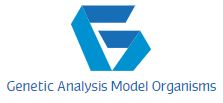This study aimed to provide insight into the relative contributions of genetic and environmental factors to palatal morphology variation in a cohort of Australian twins.Healthy Australian twins, aged 12-15 years (45 monozygotic, 46 same sex dizygotic, and 32 opposite-sex dizygotic) were included in the study groups. A scanner was used to obtain three-dimensional data of the maxillary arch. Palatal depth was defined by a line to the deepest point measured from the reference plane at the mid-point of the inter-pre-molar or inter-molar line.
This line was then divided into 10 equal sections in order to created 10 different depths for each palatal width. Each palatal width was divided into anterior and posterior areas. Univariate geneticanalysis, using the OpenMx structural equation modelling package in R, was carried out on the quantitative data using the normal assumptions of a twin model.Heritability estimates for anterior palatal width ranged from 0.75 to 0.80, and from 0.78 to 0.86 for posterior palatal width.
[Linking template=”default” type=”products” search=”KT-58997″ header=”2″ limit=”110″ start=”2″ showCatalogNumber=”true” showSize=”true” showSupplier=”true” showPrice=”true” showDescription=”true” showAdditionalInformation=”true” showImage=”true” showSchemaMarkup=”true” imageWidth=”” imageHeight=””]
Estimates for anterior and posterior palatal depth were 0.72 and 0.86, respectively.Palatal morphology tends to have a moderate to relatively high genetic contribution overall. Palate height has a higher genetic contribution posteriorly than anteriorly. The width of the deep palate is under marginally less stringent genetic regulation than the width of the shallow palate.
